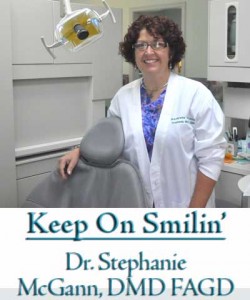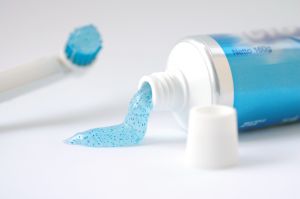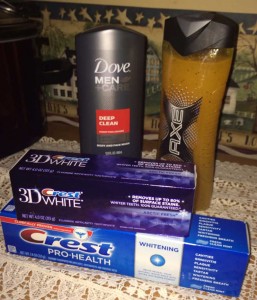Plastic microbeads in toothpaste and other consumer products an increasing problem
By Dr. Stephanie McGann, DMD FAGD, Columnist, The Times
 Plastic microbeads found in many personal care products are being found in the waters of the great lakes. Why is this a concern? First until recently I never really thought too much about those little beads in my facial scrub, body wash and toothpaste. These tiny polyethylene microbeads make these products work better, right? Not exactly.
Plastic microbeads found in many personal care products are being found in the waters of the great lakes. Why is this a concern? First until recently I never really thought too much about those little beads in my facial scrub, body wash and toothpaste. These tiny polyethylene microbeads make these products work better, right? Not exactly.
Illinois and New York are working to ban these polyethylene microbeads as they are small enough to bypass most commercial water filtration systems and end up floating around the water. The Great Lakes are showing a surprising amount of microbead pollution. Even a small handful of sand off some shores will show distinct (often blue) beads mixed in. Fish find these beads interesting and some species are eating them. I don’t have to say what a diet of plastic beads will do to the fish.

Those little blue beads may be more hazardous than you think — made from plastic they’re increasingly being seen in the water supply.
In many products, these beads could be replaced with a grit-like substance that works in a similar fashion. Some higher-end products are coming out with tiny bits of lava rock, crushed apricot pits. cocoa beans or other sand like materials. These organic materials will not interfere with fish or other wildlife. Plastic beads may also cause problems with residential septic systems. They can clog up drain fields or accumulate in tanks.
Why does a dentist care? Recently, we’re see more and more patients with these tiny blue (A leading toothpaste manufacturer uses blue) beads under their gums. It’s not unusual for a dental hygienist to remove them during a regular dental cleaning. Are they harmful? – In a patient with healthy gums they pose no real concern. However in an individual with gum disease or loose tissue around erupting wisdom teeth these beads may become an irritant. They are not really necessary. Toothpaste manufacturers are scrambling to find alternative “new and improved” ingredients to get rid of the plastic beads.
How do I know if my products contain these plastic beads? Look for polyethylene in the ingredients list. Just because a product is has granules in it not all are plastic.

This represents just a handful of products I found in a local supermarket that contain these tiny plastic beads. Read your labels to know if your favorite products do as well.
Over the course of the next year, we will most likely see a reformulation of many products. Proctor and Gamble has reported that they will remove the plastic beads from their products by 2017. While an advocate for good oral health, I have to question if brushing our teeth with plastic is really the answer. Many toothpastes do not contain polyethylene – just read the box. I am pleased to note that while the beads are causing havoc with the environment, plans are being made to phase out these plastic beads for a more environ-friendly option soon.
Dr. Stephanie McGann, who has more than two decades of dental practice experience, is a resident of the Unionville area and along with her partner, Dr. Marie Scott, operates The Brandywine Smile Center, a family-friendly dental practice in Concordville. Dr. McGann has opened a new practice in Valley Township, Rainbow Valley Dental. She is a Fellow of the Academy of General Dentistry.




